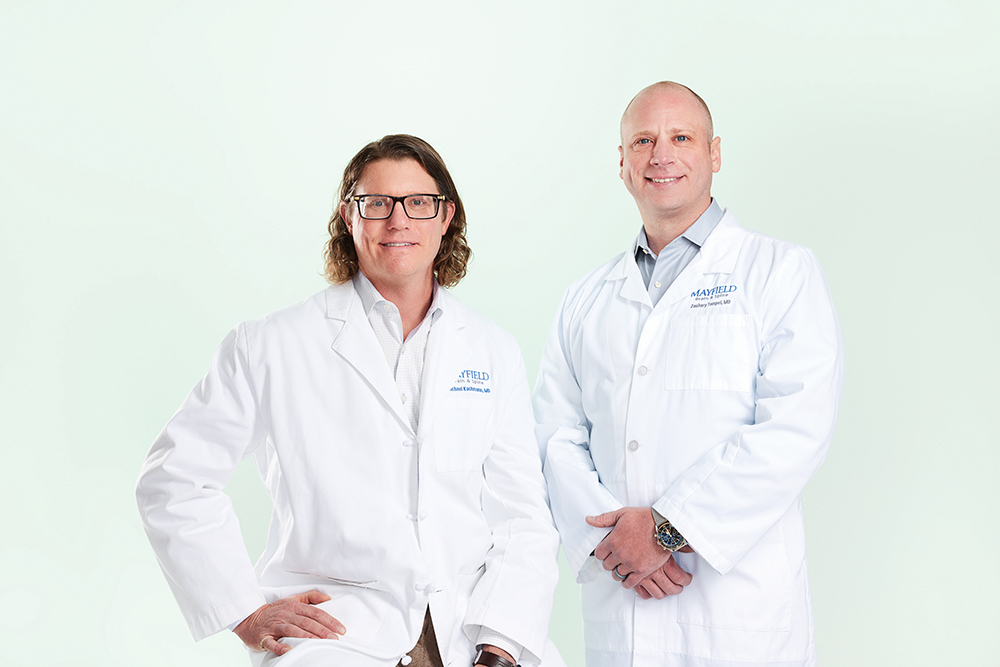
Photograph by Jeremy Kramer
You might say Michael Kachmann and Zachary Tempel were destined to be partners in the operating room. The two are a decade apart in their careers but followed strikingly similar paths: first to medical school at Indiana University, then to train at the University of Pittsburgh. It would be years before their paths officially crossed at Mayfield Brain & Spine, where their shared passion for innovation has ushered in a new era of advancements at the physician-owned practice.
“I think we’re able to team up and really create something special here,” Tempel says. “Both pushing the limits of minimally invasive techniques for degenerative spine troubles, but also really catapulting our deformity practice and spinal reconstruction practice into another stratosphere.”
For Tempel, that drive to innovate stems from a desire to lessen surgery and recovery time for patients who may spend weeks in the hospital after grueling operations. “Traditionally, a lot of these operations really are massive undertakings, and they still are to some extent,” Tempel says. “But we’ve been able to lessen that blow a little bit by developing less invasive techniques.”
Many of those once “big, gory operations” are being rewritten. Instead of cutting into bone to force the spine into conformation, approaches through the body’s natural corridors can be just as effective in restoring alignment.
The latest in the long list of innovations at Mayfield Brain & Spine is the Pulse, a surgical platform from NuVasive that takes the technologies used during complex spine surgery and streamlines them into a single system. In September, Mayfield became the first group in the nation to use the platform, which has been dubbed a “smartphone for the OR.” The Pulse can do the work of several machines, carrying out everything from neuromonitoring and imaging to bending and shaping rods for precise placement, which would typically require bringing another machine into the operating room. And as technology changes and improves, the Pulse will adapt.
“It’s not like the system itself is going to be obsolete, which is what happens with a lot of operative technology,” Kachmann says. Ultimately, Mayfield hopes innovations like the Pulse will cut time in the OR, reduce cost, and improve outcomes for the 25,000 patients the group serves each year. And the technology may soon reach into other corners of Cincinnati’s health systems; TriHealth recently made a substantial investment in the Pulse for its Good Samaritan ORs .
“We’re always trying to take good care of our patients,” Kachmann says. “And if we can do that with less pain and quicker recovery to get them back to life, that’s what we’re always looking for.”
Neurosurgeon, Mayfield Brain & Spine
Neurosurgeon, Mayfield Brain & Spine





Facebook Comments